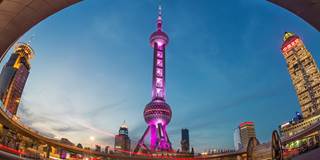The real test of China’s administrative reforms is whether they allow – and even facilitate – the effective functioning of market forces. With animal spirits – not the authorities – guiding it, China can build the high-value-added, high-tech economy of the future.
HONG KONG – The People’s Bank of China has cut interest rates for the third time in six months, in order to lighten the debt burdens of companies and local governments. But the PBOC’s monetary easing – accompanied by complementary fiscal and administrative adjustments – has done little to increase demand for new loans. Instead, it has triggered a sharp rise in China’s stock markets. The question now is whether that could turn out to be a very good thing.
There is little doubt that China’s economy is shifting gears very quickly. Official statistics show a slowdown in real growth in the old manufacturing and construction-based economy, reflected in declining corporate profits, rising defaults, and an increase in non-performing loans in poorer-performing cities and regions. Meanwhile, the government’s policies to tackle corruption, overcapacity, excess local-government debt, and pollution have put downward pressure on investment, consumption, and the government’s capacity to deliver its promised growth rate.
With harder budget constraints imposed by the central government, local officials and state-owned enterprises (SOEs) have curbed their spending on investment, and are now being overly cautious. In the short run, this restructuring could lead to localized balance-sheet recessions, despite the authorities’ efforts to create a more accommodating macroeconomic environment.

HONG KONG – The People’s Bank of China has cut interest rates for the third time in six months, in order to lighten the debt burdens of companies and local governments. But the PBOC’s monetary easing – accompanied by complementary fiscal and administrative adjustments – has done little to increase demand for new loans. Instead, it has triggered a sharp rise in China’s stock markets. The question now is whether that could turn out to be a very good thing.
There is little doubt that China’s economy is shifting gears very quickly. Official statistics show a slowdown in real growth in the old manufacturing and construction-based economy, reflected in declining corporate profits, rising defaults, and an increase in non-performing loans in poorer-performing cities and regions. Meanwhile, the government’s policies to tackle corruption, overcapacity, excess local-government debt, and pollution have put downward pressure on investment, consumption, and the government’s capacity to deliver its promised growth rate.
With harder budget constraints imposed by the central government, local officials and state-owned enterprises (SOEs) have curbed their spending on investment, and are now being overly cautious. In the short run, this restructuring could lead to localized balance-sheet recessions, despite the authorities’ efforts to create a more accommodating macroeconomic environment.